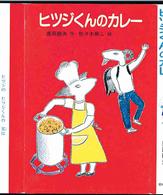Full Description
The physical education classroom can be a site of discomfort for young people who occupy marginalized identities, and a place where the normative beliefs and teaching practices of educators can act as a barrier to their inclusion. This timely edited collection challenges pre-service and in-service teachers to examine the pedagogical practices and assumptions that work to exclude students with intersecting and diverse identities from full participation in physical and health education.The contributors to this volume—who consist of both experienced and emerging scholars from Canada, the United States, the United Kingdom, Australia, and New Zealand—approach their topics from a range of social justice perspectives and interpretations. Covering a variety of areas including (dis)ability, gender, sexuality, race, social class, and religion, Social Justice in Physical Education promotes a broader understanding of the sociocultural, political, and institutional practices and assumptions that underlie current physical education teaching.Each chapter encourages the creation of more culturally relevant and inclusive pedagogy, policy, and practice, and the discussion questions invite readers to engage in critical reflection. Mapping a better way forward for physical and health education, this text will be an invaluable resource for courses on social justice, diversity, inclusive education, and physical education pedagogy.
Contents
Foreword
Acknowledgements
An Introduction to Social Justice in Physical Education: Critical Reflections and Pedagogies for Change, Lynn Randall and Daniel B. Robinson
Chapter 1: ""I Guess People Are More Attracted to White People than Black People"": Shedding Light on Racial Prejudice, Misrepresentation, and (In)Visibility of Ethnic Minority Bodies, Laura Azzarito, Mara Simon, and Risto Marttinen
Chapter 2: Culturally Relevant Strategies for Inclusion of Hispanic Students in Physical Education, Luis Columna, Michelle Dolphin, and Lindsay McCabe
Chapter 3: Towards a Critical Discourse on the Black Experience in Canada and the United States: Implications for Physical Education, Brian Culp and Martha James-Hassan
Chapter 4: Girls and Physical Education: New Starting Points for Critical Pedagogy, Eimear Enright and Louise McCuaig
Chapter 5: Rethinking ""Straight Pedagogy"": Gender, Sexuality, and Physical Education, Katie Fitzpatrick and Hayley McGlashan
Chapter 6: Looking Over Our Shoulders: Disability in Physical Education from a Critical Perspective, William Harvey
Chapter 7: Seeking the Fountain of Mental Health in Physical Education?, William Harvey, Shawn Wilkinson, and Marie Varriano
Chapter 8: Indigenous Bodies: Ordinary Lives, Brendan Hokowhitu
Chapter 9: Engaging with Issues of Social Class in Physical and Health Education, LeAnne Petherick
Chapter 10: (Un)Holy Spaces: A Consideration of Religious Minorities in Health and Physical Education, Daniel B. Robinson and Lynn Randall
Chapter 11: Exploring the Issues Faced by Immigrant Students in Physical Education, Amanda Stanec, Jennifer Bhalla, and James Mandigo
Chapter 12: Trans*, Intersex, and Cisgender Issues in Physical Education and Sport, Heather Sykes and Christopher Smith
Chapter 13: Critical Pedagogy, Physical Education, and Obesity Discourse: More Advocacy than Pedagogy, Richard Tinning, Rod Philpot, and Erin Cameron
Contributor Biographies








